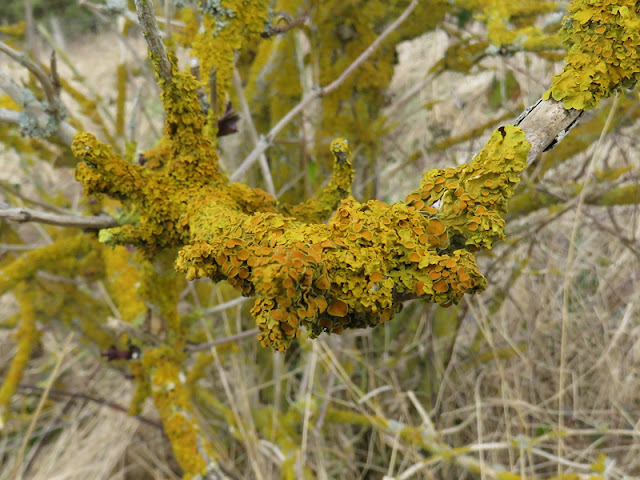I still had a few mosses from the other day to check out and new were new for the year and finally a Himalayan Cotoneaster seedling was hiding in the garden, presumably bird sown as there are a few bushes around, I just can't remember exactly where. I'll probably trip over them now.
284. Calliphora vomitoria (Blowfly)
285. Conistra vaccinii (Chestnut)
286. Lophocolea heterophylla (Variable-leaved Crestwort)
287. Plagiomnium rostratum (Long-beaked Thyme-moss)
288. Cotoneaster simonsii (Himalayan Cotoneaster)
I checked last night's moth catch this morning, up before dawn but still after a pesky male Blackbird had started doing his rounds to see what was on offer. What looked very much like another Acleris logiana was on the outside of the trap but flew off before I could pot it up. If it was, then a small colony may have become established nearby and I should catch more.. heres hoping.
What I did catch
Yellow Horned 1
Red-Green Carpet 1 *
Brindled Pug 2 *
Early Tooth-striped 2 *
Early Thorn 2 *
Early Grey 6
Pale Pinion 1 *
Pine Beauty 2
Clouded Drab 4
Common Quaker 8
Hebrew Character 5
Oak Nycteoline 1 *
35 moths of 13 species (plus 1 that got away), 6 of them (marked *) were new for the year
 |
| Red-Green Carpet |
 |
| Early Tooth-striped |
 |
| Pale Pinion |
 |
| Oak Nycteoline |
289. Selenia dentaria (Early Thorn)
290. Trichopteryx carpinata (Early Tooth-striped)
291. Nycteola revayana (Oak Nycteoline)
292. Lithophane socia (Pale Pinion)
293. Eupithecia abbreviata (Brindled Pug)
294. Chloroclysta siterata (Red-Green Carpet)
The thing about doing the 1000 in 1 ksq i, though it's not competitive, you still give youself targets and about 3 weeks ago I was hoping to finish March on 300. There a chance I could catch something in the trap overnight, but unlikely 6 more. As I was going 'off-piste' mid-morning it seemed that 300 was just a hope, nothing more. However after such a good moth trap catch I talked myself into thinking it was still possible so I had a quick saunter onto the fell to look for some more plants. It wasn't too difficult to find some new ones, even if most were just showing a few leaves. 25 minutes later I had found the six new species which made me finish March on 300.
The new ones were
295. Blechnum spicant (Hard Fern)
296. Anisantha sterilis (Barren Brome)
297. Lolium perenne (Perennial Rye-grass)
298. Senecio vulgaris (Groundsel)
299. Menyanthes trifoliata (Bogbean)
300. Rumex crispus (Curled Dock)
I'm happy.














































